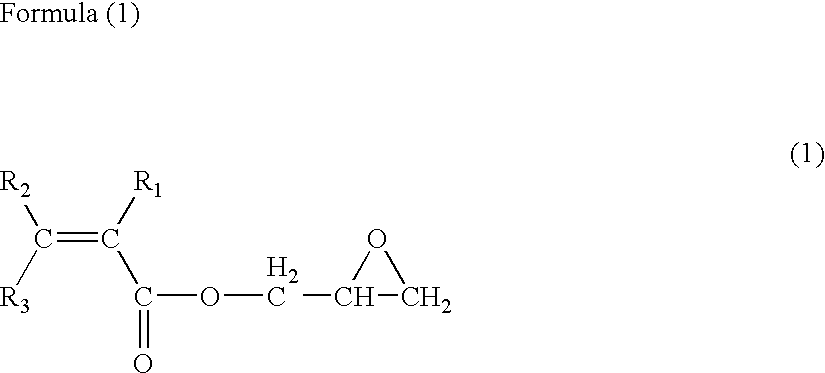Process for producing toner, and toner
a technology applied in the field of toner and process, can solve the problems of large shear force applied to the polymer, adversely affecting the anti-offset properties, and decrease in melt viscosity, and achieve the effects of reducing fog, balancing performance and anti-offset properties, and high quality
- Summary
- Abstract
- Description
- Claims
- Application Information
AI Technical Summary
Benefits of technology
Problems solved by technology
Method used
Image
Examples
examples
[0227]The present invention is described below by giving specific working examples. The present invention is by no means limited to these.
[0228]Wax
[0229]Waxes used in these working examples are shown in Table 1 below.
[0230]
TABLE 1Step A (Polymerization Step)High-Molecular Weight ComponentProduction Example A-1(by weight)Styrene76.0partsn-Butyl acrylate22.0partsMethacrylic acid2.0parts2,2-Bis(4,4-di-t-butylperoxy-0.7partcyclohexyl)propane
[0231]In a four-necked flask, with stirring of 200 parts by weight of xylene, the inside atmosphere of the container was sufficiently displaced with nitrogen and was heated to 120° C., and thereafter the above materials were dropwise added thereto over a period of 4 hours. Further, after retention under reflux of xylene, polymerization was completed. Thus, a solution containing High-Molecular Weight Component A-1 was obtained.
[0232]High-Molecular Weight Component
production example a-2
[0233]180 parts by weight of deaerated water and 20 parts by weight of a 2% by weight aqueous solution of polyvinyl alcohol were introduced into a four-necked flask, and thereafter a liquid mixture of 70.0 parts by weight of styrene, 25.0 parts by weight of n-butyl acrylate, 5.0 parts by weight of monobutyl maleate and 0.1 part by weight of 2,2-bis(4,4-di-t-butylperoxycyclohexyl)propane was added thereto to prepare a suspension. The inside atmosphere of the flask was sufficiently displaced with nitrogen, and then the contents were heated to 85° C., which was kept for 24 hours, followed by filtration, washing with water and then drying to obtain High-Molecular Weight Polymer A-2.
[0234]High-Molecular Weight Component
production example a-3
[0235]A solution containing High-Molecular Weight Component A-3 was obtained in the same manner as in High-Molecular Weight Component Production Example A-1 except that in Production Example A-1 the formulation of monomers was changed to 78.0 parts by weight of styrene, 21.6 parts by weight of n-butyl acrylate, 0.4 part by weight of methacrylic acid and 0.8 part by weight of 2,2-bis(4,4-di-t-butylperoxycyclohexyl)propane.
[0236]Formulation and analytical values of these High-Molecular Weight Components A-1 to A-3 are shown in Table 2.
[0237]
TABLE 2Low-Molecular Weight ComponentProduction Example B-1(by weight)Styrene79.1partsn-Butyl acrylate20.0partsMethacrylic acid0.9partDi-tert-butyl peroxide1.4parts
[0238]The above materials were dropwise added to 200 parts by weight of xylene over a period of 4 hours. Further, after retention under reflux of xylene, polymerization was completed. Thus, a solution containing Tow-Molecular Weight Component B-1 was obtained.
[0239]Low-Molecular Weight C...
PUM
| Property | Measurement | Unit |
|---|---|---|
| endothermic peak temperature T1 | aaaaa | aaaaa |
| endothermic peak temperature T1 | aaaaa | aaaaa |
| endothermic peak temperature T1 | aaaaa | aaaaa |
Abstract
Description
Claims
Application Information
 Login to View More
Login to View More - R&D
- Intellectual Property
- Life Sciences
- Materials
- Tech Scout
- Unparalleled Data Quality
- Higher Quality Content
- 60% Fewer Hallucinations
Browse by: Latest US Patents, China's latest patents, Technical Efficacy Thesaurus, Application Domain, Technology Topic, Popular Technical Reports.
© 2025 PatSnap. All rights reserved.Legal|Privacy policy|Modern Slavery Act Transparency Statement|Sitemap|About US| Contact US: help@patsnap.com



